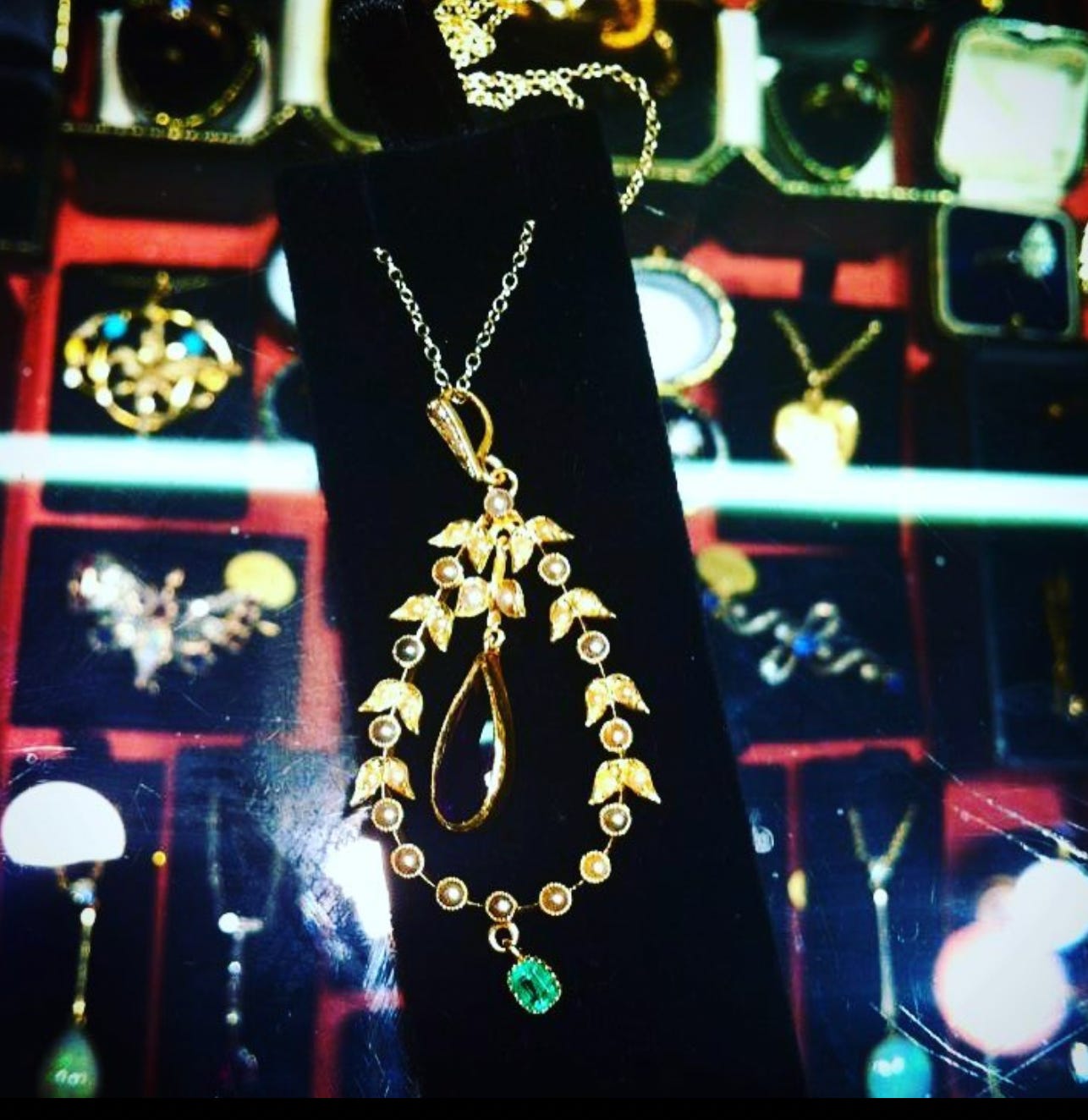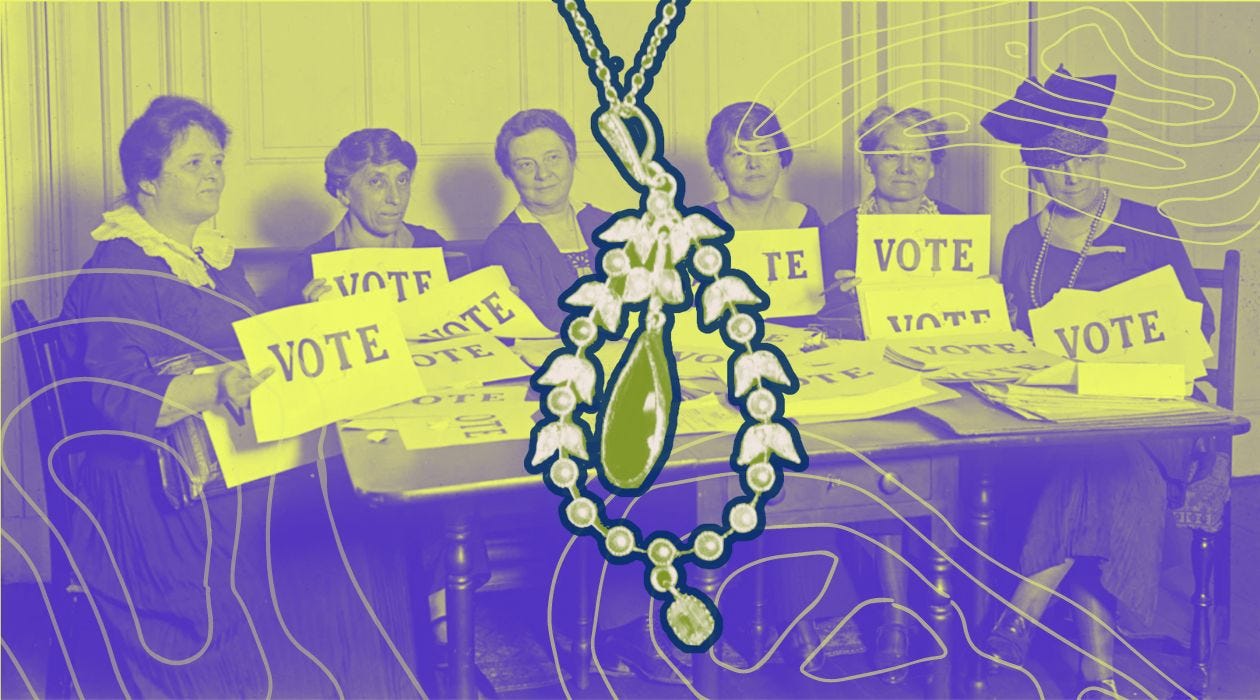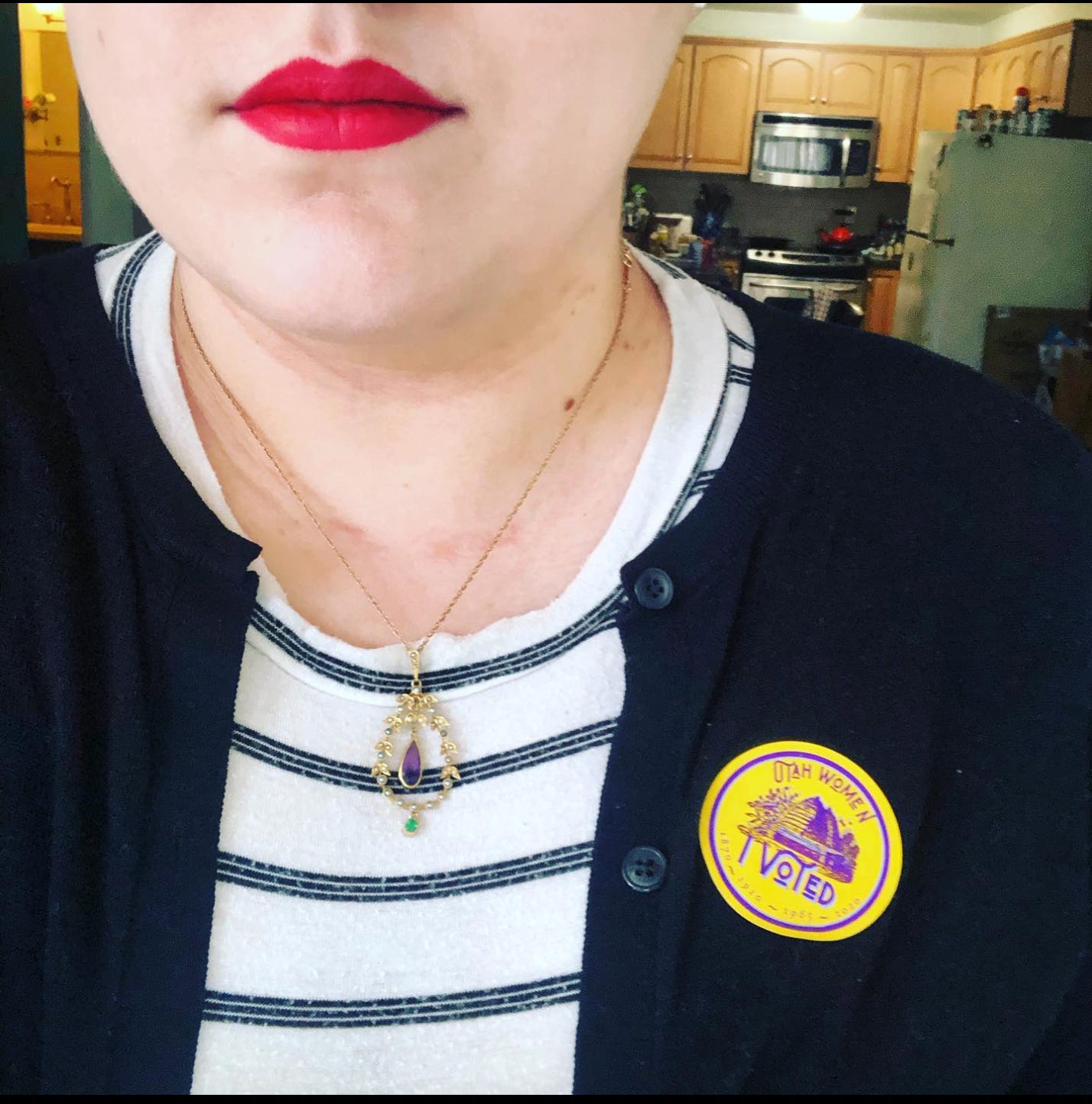When I was in college, I went on a study abroad to London. My friends and I visited the famous Portobello Road, where all the great antique shops are. I wandered (read: squeezed) my way into an old jewelry store and saw one of the most beautiful necklaces I had ever seen.

The jeweler explained to me that this necklace was likely a suffragette piece due to its filigree style and the white, purple and green color palette (you can see other examples here). The white pearls represented women, the purple represented the suffrage movement, and the emerald represented the vote.
I’m sure the store owner knew that he caught a whale when a young American feminist walked through his doors and bought this absurdly expensive necklace. I was positive he had swindled me, but I couldn’t pass up an opportunity to own a piece of history. Luckily, what he said checked out.
I may have survived off of ramen for the rest of that trip, but I still have the necklace. It’s very old and delicate, so I only wear it once a year on Election Day.
Look unto the rock whence ye are hewn
Isaiah 51 starts out by reminding the reader where they come from. For the ancient Jews, it must have been difficult to remember the good when they were constantly being conquered, clobbered and dispersed, but the Lord comforts them by reminding them how he blessed Abraham and Sarah — their progenitors — whose lives were equally as heart-wrenching.
Nevertheless, they survived and proliferated and persisted, and they ultimately served as a constant reminder that the Lord would always have their back.
Long-term memory
As silly as it might seem, this necklace serves as a reminder to me of how lucky I am to live somewhere where I can contribute my voice.
The right to vote was outlined by Thomas Jefferson in 1776.
Black men couldn’t vote until 1870.
The 19th Amendment granting American women the right to vote on a national level wasn’t passed until 1920.
Native Americans didn’t get the right to vote until 1924.
Poll taxes were banned in 1964.
You had to be 21 to vote until 1971.
American citizens who did not speak English couldn’t vote until 1975 when literacy tests were permanently banned, and the Ford Administration required voting instructions to be printed in multiple languages.
Accessibility requirements that allowed the elderly and those in wheelchairs into the polls unimpeded were passed in 1984.
For the last 246-some-odd years, in the U.S., many people fought tooth and nail so I could vote. The woman who wore this necklace and many of her sisters across the pond in the U.S. perhaps did so at a great personal cost.
Even in an incredibly uninspiring election season like this one, it serves me to remember the great privilege it is to contribute to our great democracy.





